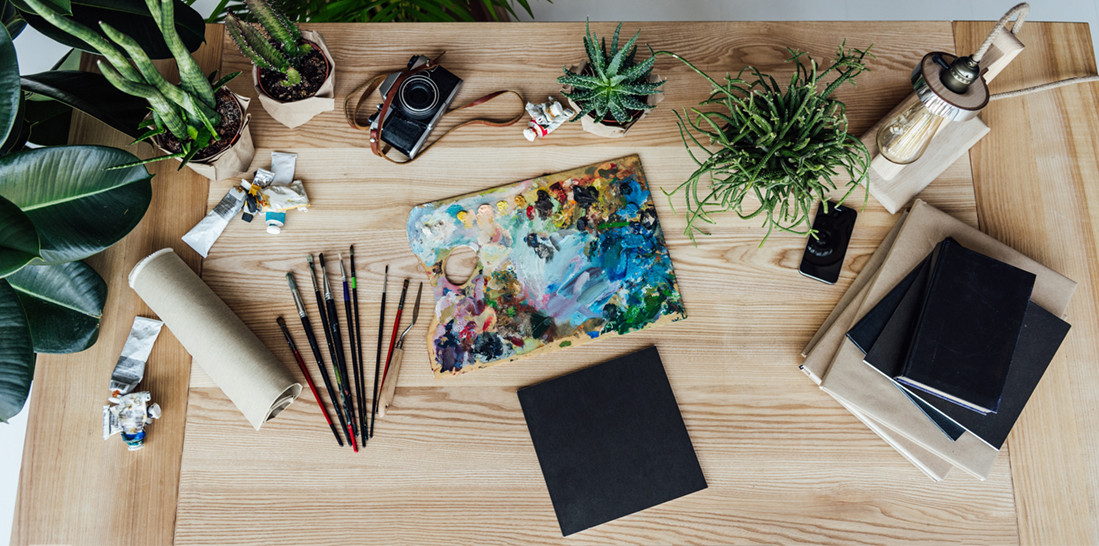
Raise your hand if you’re an artist. Don’t hold back; stick it way up there if you identify as an artist.
So, did you raise your hand?
Did you know that if we asked this same question in a room full of 6-year-olds, every single child would raise his or her hand? Every one.
You all would have raised your hands when you were in kindergarten, right? So what happened? When did we forget how to make art? If anything, we should be better artists. We've all seen more, experienced more, learned more… so what's different?
Is it the more? More responsibilities, more distractions, more obligations, more tasks to check off the to-do list every day? Many of us get stuck living our lives in this cycle of work and family responsibility, just rolling through each day. It’s like a hamster wheel. Even when the days are long, it’s so easy for them to slip by so quickly, bleeding from one into the next. Maybe it’s a matter of priorities?
Make time for creativity
So, back to the 6-year-olds: children create art for the pure joy of it. Is there anything you do, for yourself, just for the joy it brings? For us, as creative professionals, much of the time creating art just for the sake of creating feels like a luxury that we can’t afford. We give ourselves to our families, and our work, and then there’s just not much left.
But here’s the thing: we do need it. We need that creative outlet—that joy—to step off the hamster wheel. We need these daily intervals of art and nature to refocus and take care of ourselves, because the process of creating is a necessary part of self-care and wellness.
Integrating creative practice into our everyday lives is essential to our health, both physical and emotional. That’s heavy, right? Essential. But everyday creative activity helps people stay healthy. Creative activity is broad; it encompasses music, art, photography, dance, writing, and more.
Did you know that the link between creativity and better mental and physical health is well established by research?
- According to Scientific American, creatives stay healthier longer and enjoy health more. Another study shows that they require fewer visits to health care providers and use fewer medications.
- Creative people experience a greater sense of control. They are proactively involved in living, and therefore less reactive. They’re more outgoing, more exuberant, and their morale is higher.
- Creatives tend to be more socially engaged, and more optimistic.
Creativity is good for the body
Creative practice can profoundly affect the human mind and body. A 2004 study used writing as a treatment for HIV patients. Researchers found that creative writing actually resulted in higher T-cell counts. The act of writing impacted the cells inside the patients’ bodies and improved their immune systems.
The process of creating art doesn’t just make you feel better; it creates real, physical changes inside your body.
The process of creating art doesn’t just make you feel better; it creates real, physical changes inside your body. By integrating creativity into your lifestyle, and expressing yourself in a tangible way, you can experience concrete physical benefits.
Here’s the best part: it’s the creative process that impacts overall happiness. You know that “flow” you experience when you’re so absorbed in creation process that hours seem like minutes? Experts have discovered that immersion in that state of creative flow can produce substantial happiness—the kind that lasts longer than the pleasure we get from eating a good cookie or enjoying a great beer.
No specific creative activity is needed to reap this benefit; anything creative will do—weaving, painting, or even writing a business plan. You don’t even have to be good at it, because it’s the process that’s important. Engaging in everyday creativity contributes to your psychological development. It reduces stress and depression and increases well-being and happiness.
Creating every day
Some might say it’s trickier for creative professionals. It’s our job to be creative. Do we reap those same benefits when we’re creating as part of work? Importantly, we ask ourselves this: are we getting a creative outlet, in and out of the office? We apply our childhood sense of play in a non-traditional way when at work: to our practices and methods of exploration as we design and develop. We paint logos and murals; we write about color; we have costume contests. We go for walks and enjoy new plants in the office. In short, we foster and support a creative culture.
So what can you do? Pick up a coloring book or a journal and give yourself to it for a half hour every day. Go outside with your camera. Stay inside with your camera. Sing—with a band or choir or in the shower. Get your hands dirty with paint or clay or potting soil or frosting or dough.
Create for the pure joy of it.